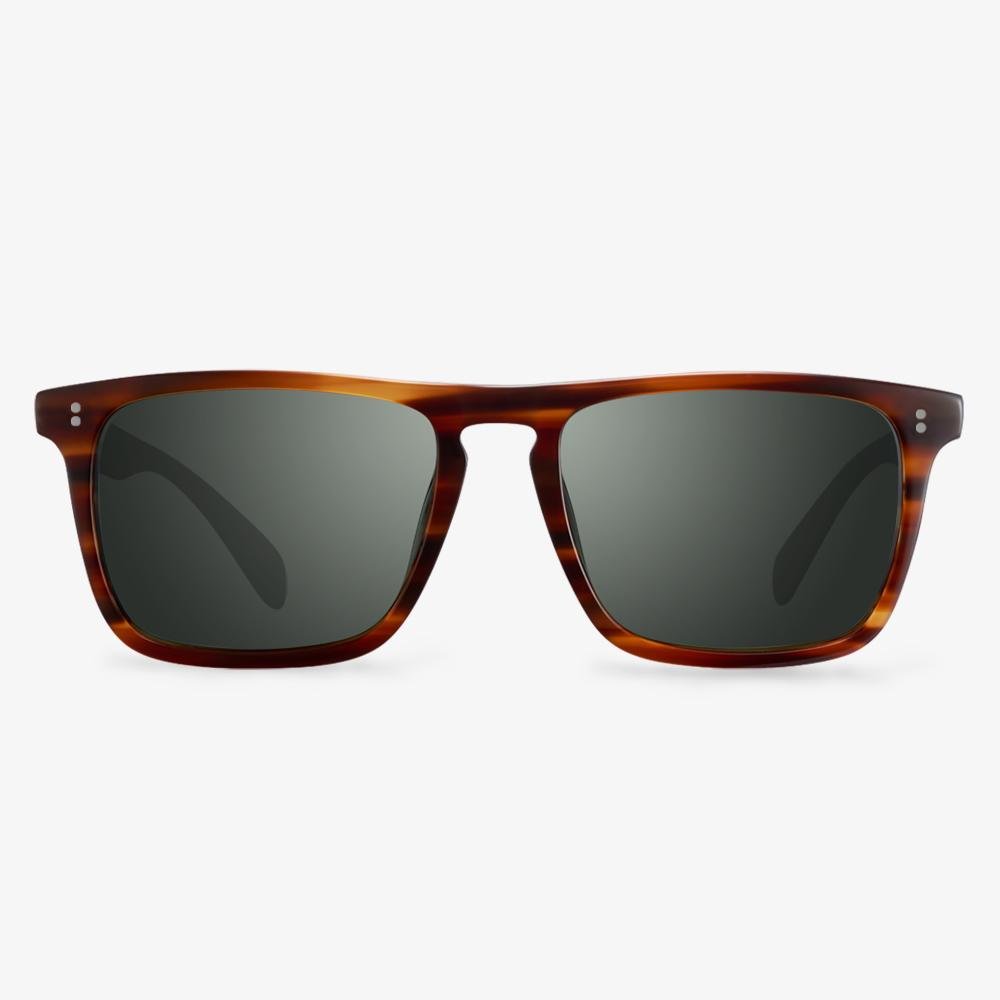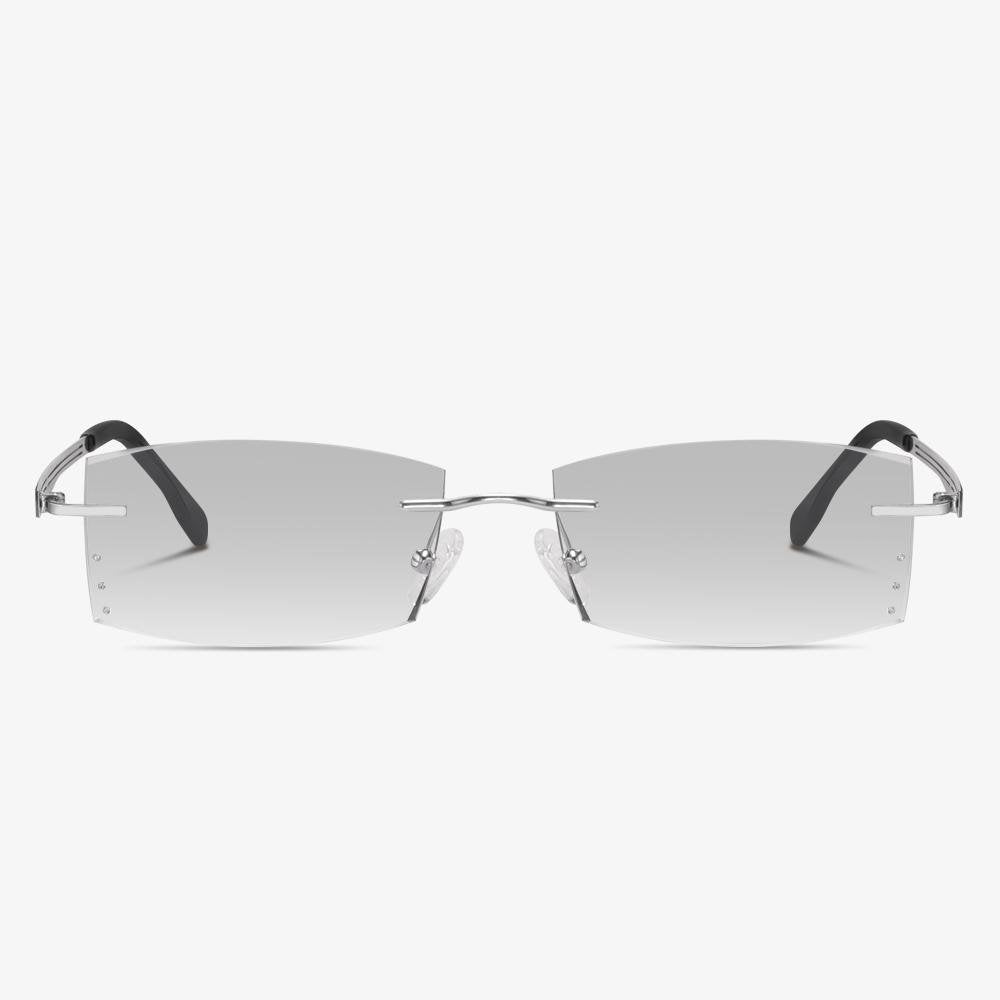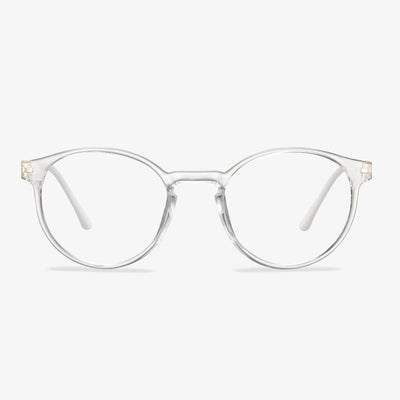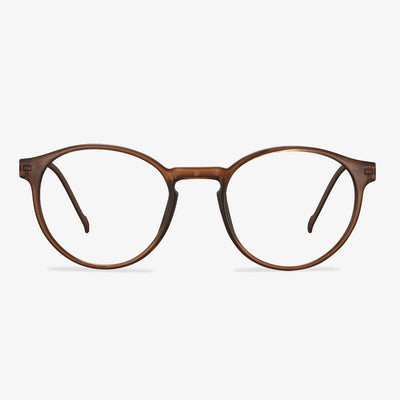Optix 55 day/night driving glasses
These glasses are designed to provide anti-glare and UV protection. They have a flexible plastic lens and frame that can be used over prescription glasses. They use polarized lenses to make the image look sharper. They help reduce glare, reflection, and its negative effects while improving and brightening the visual area.
When were the first glasses invented?
No one knows when the first pair of glasses were invented, but we do know that the grinding techniques for making simple magnifying glasses have been around since 1000 AD, especially in regions where glasses were already produced (including northern Italy). The earliest artwork of glasses appears in the Treviso Cathedral fresco painted by Tommaso de Modena in 1352. There is reliable evidence that eyeglasses were invented in Italy in the late 13th century. The first pair we think of as eyeglasses appeared in Italian pizza in the late 12th century and looked more like two small magnifying glasses (made of raised glass) riveted together at the top of the handle. In 1266, The English Franciscan Monk Roger Bacon wrote about the scientific principles of corrective lenses, but there is no evidence that he applied this knowledge to the manufacture of eyeglasses.
The lenses of prescription glasses
Common materials for lenses include glass, resin, and PC. The glass is fragile and heavy, and few people wear it anymore. PC film is tough and not fragile, but it is not resistant to high temperature and the surface is easily scratched. The most common type of lens on the market today is the resin lens, which is light in weight, hard to break, and reasonable in price. At present, it is generally recommended that you choose resin sheets, and it is recommended that people with ultra-high myopia choose glass sheets.
Generally, lenses can be divided into spherical and aspherical surfaces according to different curvature designs. When choosing, refer to the degree of the eye. For people with lower degrees, There are fewer differences between the two shapes. For people with moderate to high myopia, aspherical lenses will have better imaging effects and clearer vision.
When choosing a lens, a parameter that is often mentioned is the refractive index. Common refractive indexes are 1.56, 1.60, 1.67, and 1.74. With the same degree, the higher the refractive index, the thinner the lens.
Design principle of progressive multifocal lens
For the same piece of the lens, the top is used to see far, the bottom is used to see close. The upper and lower degrees are different.
There is not a sudden change in the distance degree fixed above the lens to the near degree fixed below the lens, but a gradual transition between the two through gradual changes in refractive power, which has special benefits over common bifocals or trifocal lenses.
S.T.Dupont - Glasses For Men
S.T.Dupont glasses inherits the traditional and consistent high-end image.No matter in the workmanship, materials, and design, they are striving for exquisite perfection, integration of western European flavor, fully showing the noble identity and noble temperament of the wearer. It has been loved by people all over the world for many years and has become a dynamic modern brand.
Types of aspheric lenses
There are two types of aspheric lenses: single aspheric surface (single aspheric surface for short, different from the outer aspheric surface and inner aspheric surface) and double aspheric surface (double aspheric surface for short). For the outer aspheric surface, convex is an aspheric surface and concave is a spherical surface. For the inner aspheric surface, a convex surface is a sphere, and a concave surface is an aspheric surface. In addition to correcting aberrations, the double aspheric lens also improves the effective field of vision compared to the single aspheric surface. When people's eyes look through the edge of the lens to see things, like driving when looking at the reflective mirror, it often affects vision because of the large aberration at the edge of the lens. Previous designs of aspheric plates have analyzed a single ray of light passing through the center of the pupil. Wavefront technology controls the entire beam of light passing through the pupil, eliminating high-order aberrations.
How Do Bifocal Glasses Work?
After learning some basic information about bifocal lenses, you should know how the bifocal glasses work.
With a pair of bifocal glasses, it would be convenient since they combine all your vision needs into a pair of glasses and you do not need to switch two pairs of glasses frequently. Bifocal glasses are usually designed to for those people who are over the age of 40-45 that need additional help with their near vision due to the effects of presbyopia where the crystalline lens inside the eye naturally begins to lose its ability to focus on near objects.
If you work in the office, you may need a pair of bifocal glasses. The top distance vision in the top of the lens can be used for meetings or presentations and the near vision in the bottom of the lens can be used to look at the computer screen or at documents.











































